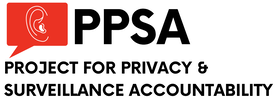|
On his way out the door as director of national intelligence, Dan Coats asked Congress to permanently extend legal authority for a National Security Agency (NSA) program that allows the government to see who we call and text.
How much does such “metadata” on calling records say about us? More than you might think. A Stanford University study, presented in 2016, collected metadata — such as the numbers we call or text, how long we are on the phone — from the smartphones of 823 volunteers. From their 250,000 calls and 1.2 million texts, researchers gained insights about individuals’ religious beliefs, heart and neurological conditions, gun purchases and, in one case, a decision to schedule an abortion. “Metadata absolutely tells you everything about somebody’s life,” Stewart Baker, NSA’s former general counsel, has said. “If you have enough metadata, you don’t really need content. … [It’s] embarrassing how predictable we are as human beings.” This program, known as Section 215 of the Patriot Act, also permits the NSA to access records of not just a target — call him “Bob” — and his calls to “Alice,” but also Alice’s calls and the calls those people make. That is why, in a letter to the leaders of the House Judiciary Committee, a coalition of 40 civil liberties groups correctly noted that “the majority of individuals surveilled under the program are neither suspected of any wrongdoing, nor in contact with anyone who is.” In 2018, for example, the government collected 434 million records related to 19 million phone identifiers — despite listing just 11 targets. Comments are closed.
|
Categories
All
|


 RSS Feed
RSS Feed